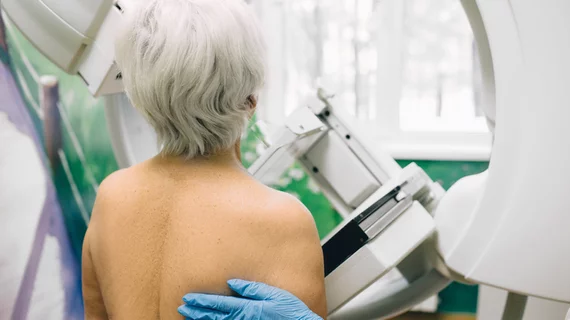Data underline need to improve breast imaging interpretive accuracy among general radiologists
Breast imaging subspecialists perform better at reading mammograms than general radiologists, a trend that warrants attention from the specialty as the population continues to age, experts charged Tuesday.
Rads who live in the West or Midwest, along with those who perform the mammogram themselves, were also more likely to achieve acceptable performance across several quality metrics. The findings are part of a new Neiman Health Policy Institute analysis of National Mammography Database numbers from an 11-year period, highlighted in Radiology.
Breast subspecialists account for less than 10% of radiology, and researchers believe the data underline the need to boost ranks of these professionals and mammography know-how across the entire profession.
“As the U.S. population ages and greater numbers of women comply with screening guidelines, the demand for all radiologists to interpret screening mammograms is anticipated to increase,” author Andrew Rosenkrantz, MD, professor and director of health policy at NYU Grossman’s School of Medicine and a Neiman Institute senior affiliate research fellow, said in a statement. “Hence, attention to the interpretive screening performance of all radiologists is critical, and strategies to improve interpretive accuracy among generalists would be beneficial.”
For their study, Rosenkrantz et al. retrospectively analyzed info from the American College of Radiology’s mammography database, logged between 2008-2019. They further linked this info to Centers for Medicare & Medicaid Services data sets, landing on a study population of 1,223 radiologists. The team pinpointed physicians’ performances on varying quality metrics, including recall rate, cancer detection, positive predictive value of recall, and biopsies recommended.
Nearly 32% of radiologists had acceptable performance for all metrics based on external benchmarks. And depending on the measure, the acceptable performance range fell anywhere from 52% to 77%. Physicians who perform breast ultrasound were also less likely to achieve acceptable performance across metrics.
First author Cindy Lee, MD, said certain characteristics seemed to predict higher performance in some areas, but lower performance in others. Radiologists in academia, breast imaging, or with more experience were likelier to have higher recall rates. But the same individuals were also more apt to produce higher cancer detection rates and spot a greater proportion of ductal carcinoma in situ.
“This example highlights the importance of assessing performance across measures holistically versus individual metrics in isolation, supporting guidance in the ACR [Breast Imaging-Reporting and Data System] atlas” Lee, an assistant professor of radiology at NYU, said in a statement.
You can read more of the results in the Radiological Society of North America’s flagship journal here.

